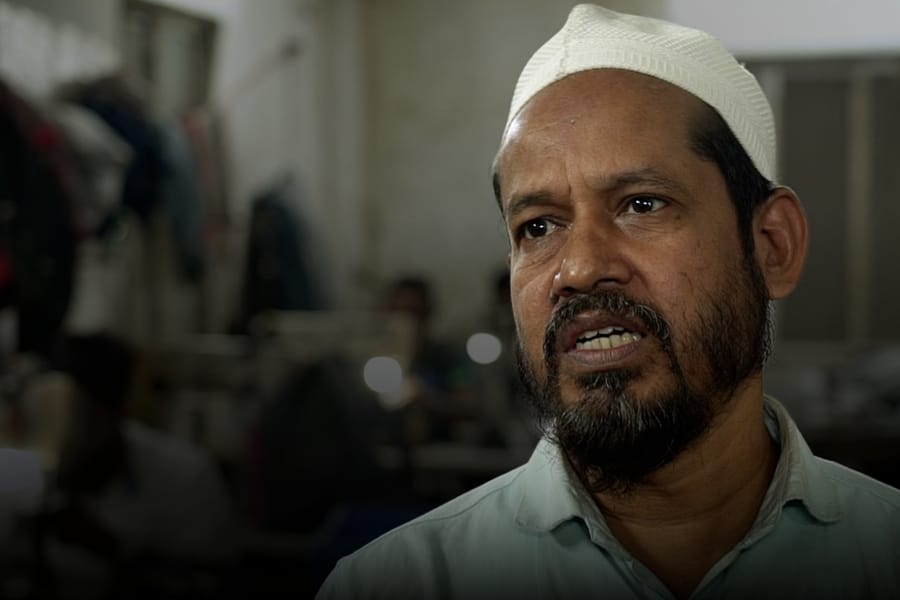 |
| Overgrown tea plants at Senglung tea estate. Telegraph picture |
Jorhat, Jan. 7: They no longer lend themselves to the nimble fingers of pluckers, having grown beyond their reach — unkempt, unknown and orphaned.
But these plants, growing to heights ranging from 20 to 30 feet, have a rich history written all over them, a history that is nearly 170 years old.
They were once tea bushes at Senlung tea estate, owned by Maniram Dewan, the first Indian commercial tea planter and freedom fighter, who died at the gallows.
The forgotten tea estate, along the Assam-Nagaland border in Upper Assam’s Sivasagar district, has now been discovered, thanks to a researcher’s efforts.
Senglung and Cinnamara were the two tea estates started by Dewan in 1845 after he resigned from the post of dewan, land agent and chief executive, of India’s first tea company, the Assam Company.
Although Cinnamara still exists, Senlung got lost in time and there were no records available about the garden, till Pradip Baruah, a tea expert undertaking research on Assam tea on behalf of TEAVISION, an NGO, discovered the tea estate on Saturday.
“Tea plants of nearly 20 to 30 feet in height now lie scattered in that area. It is possible that the original plants died of old age and these trees grew from the seeds falling off from the plants planted by Maniram Dewan. History books also suggest that Senglung tea estate was located somewhere near Suffry in Sivasagar. There is no doubt that this was the Senlung tea estate started by Dewan,” Baruah, who is also a senior researcher at Tocklai Experimental Station, told The Telegraph today.
The area where the plantation lies is known as Nagasiri and is hardly 2km from the Nagaland border. The area is also close to Suffry tea estate, nearly 400km from Guwahati.
History has it that Senglung tea estate, along with Cinnamara, was confiscated by the British and auctioned off soon after the execution of Dewan in 1858 for his role in the freedom struggle.
The British tea company, George Williamson, purchased the two estates.
However, the two tea estates fell on bad times as the labourers refused to co-operate with the new owner. They remained loyal to Maniram Dewan, forcing the company to part with them.
Cinnamara tea estate was taken over by Jorehaut Tea Company and developed later. It is now owned by the government’s Assam Tea Corporation. However, how and why Senglung was abandoned in the foothills is unknown.
Baruah said a part of Suffry tea estate is known as Singlo division, a name which may have been derived from the original “Senglung”.
Abir Sarmah, the manager of Suffry tea estate, told The Telegraph over phone that he was aware of the old tea bushes in the hills near his garden but the area being inaccessible, no one had really ventured there. He said the labourers of his garden still perform “Dewan puja” at the beginning of the production season, probably to “appease” Maniram Dewan.
“The area where the plantation was discovered is not under the Suffry tea estate. These areas might have been lost under the Land Ceiling Act or otherwise. We have no records,” he said.
Jhaori Munda, a retired labour sardar (supervisor) of Suffry tea estate, said he had seen old, tall tea bushes when he was young. “I remember seeing an old bungalow there, which was made of wood and bamboo. I have no idea if it still exists,” he said.
He said the area is known as Nagasiri as there were staircase-like cuts on the slopes of the hills, on which the Nagas used to climb down from their villages to trade with the people in the foothills.
“There were tall tea plants found in these areas earlier, which were cut down by the local residents for construction,” he said.
Baruah said some parts of the jungle, where the tea estate existed, were cleared by local residents who began tea plantation on their own.
“Large areas are still unclear or uncut where quite a few big to medium-sized tea plants exist, particularly on the steep slopes, covered with creepers, bamboo and other medium-sized plants,” he said.
He said he had come to know about Senglung tea estate in the hills, while researching for a documentary on the history of Assam tea. “I approached the garden management for their help to locate the garden nearly a year ago. However, the arrangements for the exploration finally materialised only on Saturday,” he said.
He said preservation of the remaining original plantations of Maniram Dewan was the need of the hour. “It is a heritage site for Indian tea and could be developed as a tourist spot. The area could also be useful for scientific research as those original tea plants might be having special characteristics that define the unique quality of Assam tea or that make them pest and disease resistant, being in the wilds that they have for close to two centuries,” he said.











